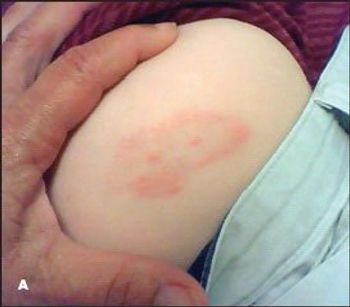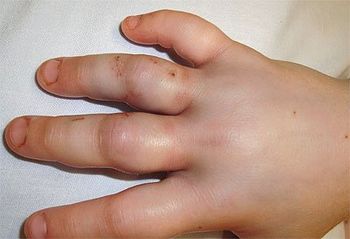
An editorial that examines the current status of H1N1 in the medical setting.

An editorial that examines the current status of H1N1 in the medical setting.

In early summer, an 8-year-old boy from rural central Virginia was brought for evaluation of a rash on his buttock. He had noticed the rash that morning, when it became pruritic. The father had removed a tick from the area about 10 days earlier. The child denied fever, headache, vomiting, fatigue, arthralgia, myalgia, and other symptoms.

When reaching under a shed for the frog she had been chasing, a 4-year-old girl was bitten by “something.” The parents thought the bite was from a snake because of reports of copperhead sightings in the area. The mother immediately brought the child to the emergency department (ED).

Letters to the editor about iron deficiency, encouraging vaccinating children in the hopsital, and more.

Public health agencies and schools have new federal guidance at their disposal for how to respond to 2009 H1N1 influenza in schools, thanks to recommendations from the Centers for Disease Control and Prevention. Recommendations encourage officials to weigh the risk of community-acquired flu with the decision to close schools or community functions.

Parents of a child who has a seizure and a fever may be concerned about epilepsy. They probably won?t be happy to learn it might be swine flu.

Alberta Children's Hospital in Calgary, Canada, has isolated one of its units due to three swine flu cases, according to health officials.

Although it has been more than 40 years since Kawasaki disease was first described, it is still something of a medical mystery.

Reviews of medical journal articles on adenoidectomy and tonsilectomy's connection to weight gain, the benefits of water over soda, and postpartum depression in moms of multiples.

The recent swine flu outbreak thankfully was not a pandemic. But it may have been the start of a new industry, for immunization for influenza H1N1.

The CDC has issued laxer guidance for school closings pertaining to H1N1 flu, recommending that only infected students and teachers remain at home.

The CDC and the Department of Health and Human Services co-hosted a Web "town hall" Q+A session about swine flu on Thursday.


A 4-month-old boy was transferred to our center from a community care hospital because of persistent fever (temperature up to 39.4°C [103°F]) of 5 days’ duration. He also had decreased activity, increased irritability, occasional vomiting after feedings, and a few episodes of loose stool.

In my exam room hangs a poster of diseases that have been significantly reduced through vaccination (eg, chicken pox, measles, polio)...

The federal government is changing the recommendations for vaccinations: what should the new ones be, and how will the changes affect your practice?

The infant rate of influenza was reduced 63% among vaccined mothers.

A 13-year-old boy was brought to the emergency department (ED) with a generalized itchy rash of 2 days' duration. For the past 3 days, he had dry, itchy eyes with a purulent discharge (Figure 1) and nonbilious emesis 2 or 3 times per day, with some blood streaks in the vomitus on the third day of illness.

Novartis Vaccines, along with the Parent Teacher Association (PTA), has announced a public health initiative supporting the Centers for Disease Control and Prevention (CDC)'s recent flu recommendation to vaccinate all children ages six months to 18 years.

Various government groups work to safeguard the future of vaccines.

Vaccinating new mothers and other family members against influenza before newborns go home may be an effective way to protect infants against the virus, according to Duke Children's Hospital researchers.

Aaron Friedman, MD, reviewed maintenance and rehydration fluid therapy in the pediatric setting, as well as treatment management scenarios for common electrolyte abnormalities, at the American Academy of Pediatrics 2008 National Conference and Exhibition in Boston.

The US Food and Drug Administration (FDA) approved a test developed by the Centers for Disease Control and Prevention (CDC) used to diagnose influenza, including the H5N1 flu virus.

Study: Should herpes simplex virus be considered in the differential diagnosis of neonatal fever and hypothermia?

The Centers for Disease Control and Prevention (CDC) have expanded their recommendation for flu vaccination coverage to include all patients ages 6 months through 18 years.